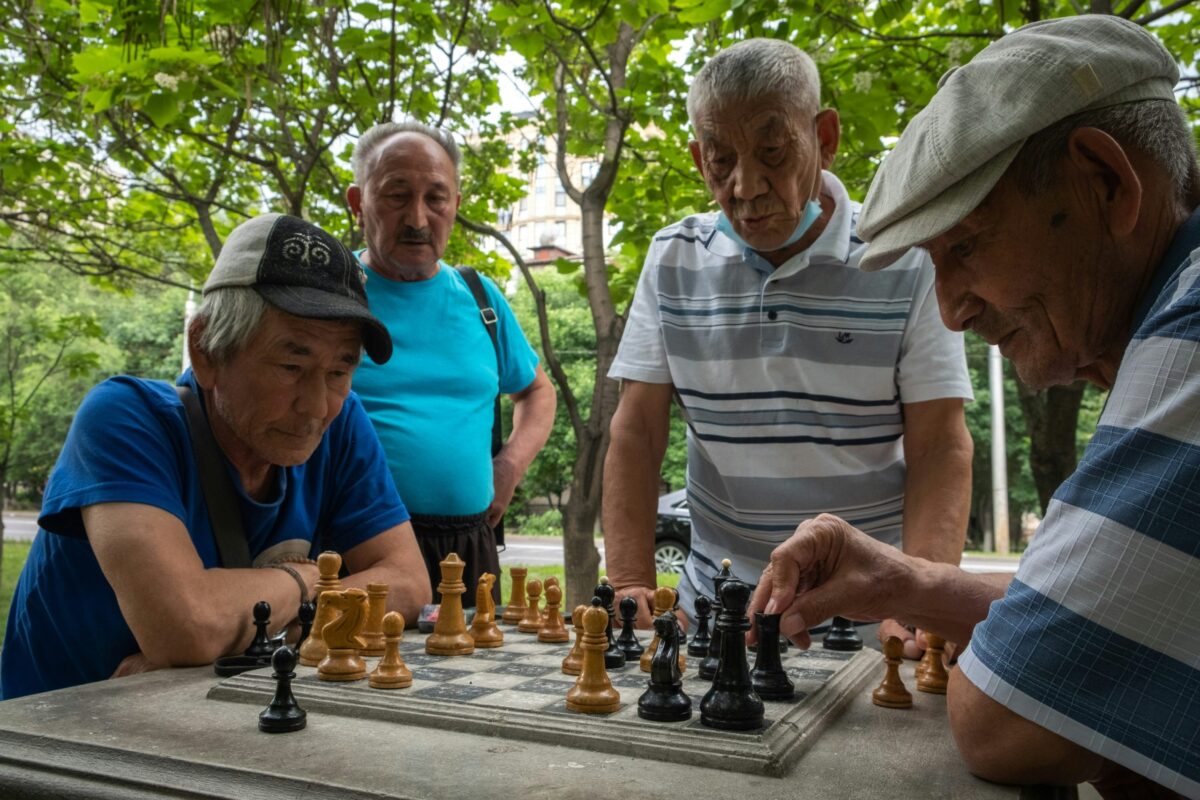In early 2017, the United Nations General Assembly (UNGA) officially declared December 12 the International Day of Neutrality at the behest of Turkmenistan—a member state which remains ‘frozen in time’ and walled off from much of the outside world.
Neutrality has been defined by the very same body as, “abstaining from participation in armed conflict and maintaining an attitude of impartiality”. In the context of the ongoing Russo-Ukrainian war, however, the term has become synonymous with fence-setting and sanctions-busting – particularly when it comes to emerging economies from the Global South.
Far from contenting itself with being a mere onlooker, Kazakhstan has consistently demonstrated its willingness to mediate conflicts both in the regional vicinity as well as further afield. Kazakhstan’s credibility as an honest broker stems from its aversion to ‘bloc mentality’ and embrace of multilateralism.
Having hosted 22 rounds of Syria peace talks as part of the so-called Astana Process prior to Bashar al-Assad’s unexpected deposition earlier this month, Kazakhstan pulled out all the stops to end the carnage in a theatre of war where it has little skin in the game relative to format guarantors Russia, Iran and Türkiye.
Furthermore, on May 10, 2024, the Armenian and Azeri foreign ministers held negotiations in Almaty concerning border delimitation. However elusive a lasting settlement still seems, President Kassym-Jomrat Tokayev convincing both sides to give diplomacy another chance after previous discussions in Moscow, Brussels and Washington yielded no major breakthrough reflects his administration’s preparedness to play peacemaker and bridge ostensibly irreconcilable differences between Yerevan and Baku.
As far as an increasingly assertive and result-oriented Astana is concerned, taking on the ‘Karabakh dossier’ could serve as a stepping stone to help resolve more high-stakes conflagrations in Eastern Europe and West Asia.
Lines in the sand
Ever since voluntarily surrendering the world’s fourth largest nuclear arsenal and closing down the Semipalatinsk Test Site post-independence, Kazakhstan has thrown its weight behind the global disarmament movement. It vouched for and oversaw the implementation of the Joint Comprehensive Plan of Action (JCPOA),withtwo discussions between the P5+1 (US, UK, France, Russia, China and Germany) and Iran taking place in Almaty in 2013.
In terms of boosting regional connectivity, Kazakhstan is positioning itself as a key node in the Eastern section of the International North-South Transport Corridor (INSTC)—a multi-modal trade artery stretching 7,200 kilometres from St Petersburg to Mumbai via Iran and the Persian Gulf.
Although the ‘friend to all, enemy to none’ ethos has long been woven into Kazakh statecraft, Russia’s ‘special military operation’ was a litmus test of its southern neighbour’s ability to navigate the ensuing geopolitical minefield via high-wire diplomatic manoeuvring.
In stark contrast to comparatively hawkish ex-USSR states such as Ukraine and the Baltics, Kazakhstan views Russia as an unavoidable reality it does not have the luxury of downgrading, let alone rupturing, relations with. If anything, maintaining the current status quo is an insurance policy against territorial encroachment by a former coloniser on the march with whom the Central Asian giant shares a 4,500-kilometre land border and close people-to-people links.
That said and notwithstanding more than 80 per cent of Kazakhstan’s crude oil exports passing through the Kremlin-funded Caspian Pipeline Consortium (CPC), Tokayev has never shied away from drawing a line in the sand and pushing back against blind allegiance to Russia—be it opting out of BRICS+ accession, announcing plans to scrap the Cyrillic script, banning Victory Day celebrations or refusing to recognise the independence of ‘quasi-states’ Donetsk and Luhansk while seated alongside Vladimir Putin at the 2022 St Petersburg International Economic Forum (SPIEF).
Air Astana was also among the first international airlines to cease all civilian flights to and from the Russian Federation after the full-scale of Ukraine began.
‘Win-win cooperation’
Whereas the prevailing school of thought in most Western capitals is that dialogue with Russia amounts to a lost cause, Kazakhstan does not consider silent treatment a constructive means of achieving one’s ends in the realm of international relations—however ideologically disparate the parties in question may be.
The fact that Astana recently de-listed the Afghan Taliban as a terrorist outfit on the assumption that they are here to stay speaks volumes about its ‘peace through trade’ approach vis-à-vis even the most unsavoury regimes. Mercantile considerations aside, Kazakhstan provided 2.6 billion US dollars worth of humanitarian aid to Afghanistan in 2023 and has around 4,500 Afghan students enrolled in its universities.
Over and above not making business sense, taking part in any Western-led sanctions crusade against Russia would place Kazakhstan on a slippery slope of backing future G7 or OECD campaigns to cut other non-democratic rivals – namely China – down to size. Such action does not jibe with what Kazakh Deputy Foreign Minister Roman Vassilenko described at a recent conference in Abu Dhabi as the country’s ‘national mentality’ of pursuing ‘win-win cooperation’ over ‘zero-sum, exclusionary games’.
Needless to say, Kazakhstan has always been a flag-bearer for greater pan-Asian stability, prosperity and coordination.
It is worth recalling that the Conference on Interaction and Confidence-Building Measures in Asia (CICA)—a multi-national forum founded in 1992 that now comprises 28 full-fledged members and 10 observers—was the brainchild of Kazakhstan’s first leader Nursultan Nazarbayev.
He also established the Congress of Leaders of World and Traditional Religions—a platform aimed at promoting interfaith harmony and unity among diverse confessions—and proposed creating the Organisation of Turkic States (OTS) back in 2006.
Furthermore and by virtue of being in power at the time, Elbasy was largely responsible for Kazakhstan’s admission to influential Eurasia-centric groups—notably the Shanghai Cooperation Organisation (SCO) and the lesser known Economic Cooperation Organisation (ECO) which it assumes chairmanship of in 2025.
Hedging Kazakhstan’s bets
Meanwhile, Kazakhstan’s engagement with China scaled new heights and took on a more multi-faceted dimension under Tokayev’s watch. As a fluent Mandarin speaker who lived and studied in Beijing during the 1980s, he has injected new vigour into the already flourishing Sino-Kazakh partnership and come across as a staunch proponent of the Belt and Road Initiative (BRI).
Bilateral trade in the first 10 months of 2024 stood at 33 billion US dollars, as compared with the preceding year’s record turnover figure of 41 billion US dollars. Kazakhstan’s dealings with Iran are on a similarly promising trajectory as non-oil trade from March to August 2024 reportedly rose by 17 per cent year-on-year.
Despite historically viewing Central Asia as a battering ram against Taliban-controlled Afghanistan, US policymakers are coming to terms with just how indispensable an ally the region’s most resource-rich and strategically-situated state is amid a rapidly-evolving world order.
Kazakhstan’s balanced and pragmatic foreign policy is often mistaken for Kremlin-friendly posturing by Western heavyweights, yet the sobering reality is that they have very few levers at their disposal to strong-arm a fiercely independent Eurasian powerhouse into changing course.
Granted, middle-class Kazakhs still flock to Euro-Atlantic countries for leisure, higher education and better career prospects. Kazakhstan also holds annual consultations with the United States within the C5+1 framework and entered into an Enhanced Partnership and Cooperation Agreement (EPCA)with its largest trading partner—the European Union—in 2015.
Nonetheless, hedging Astana’s bets to such a degree that it does not end up beholden to any single external actor or get caught in the crosshairs of ‘Great Power Competition’ has been the capstone of Tokayev’s legacy.
Photo by Joel Heard on Unsplash.







